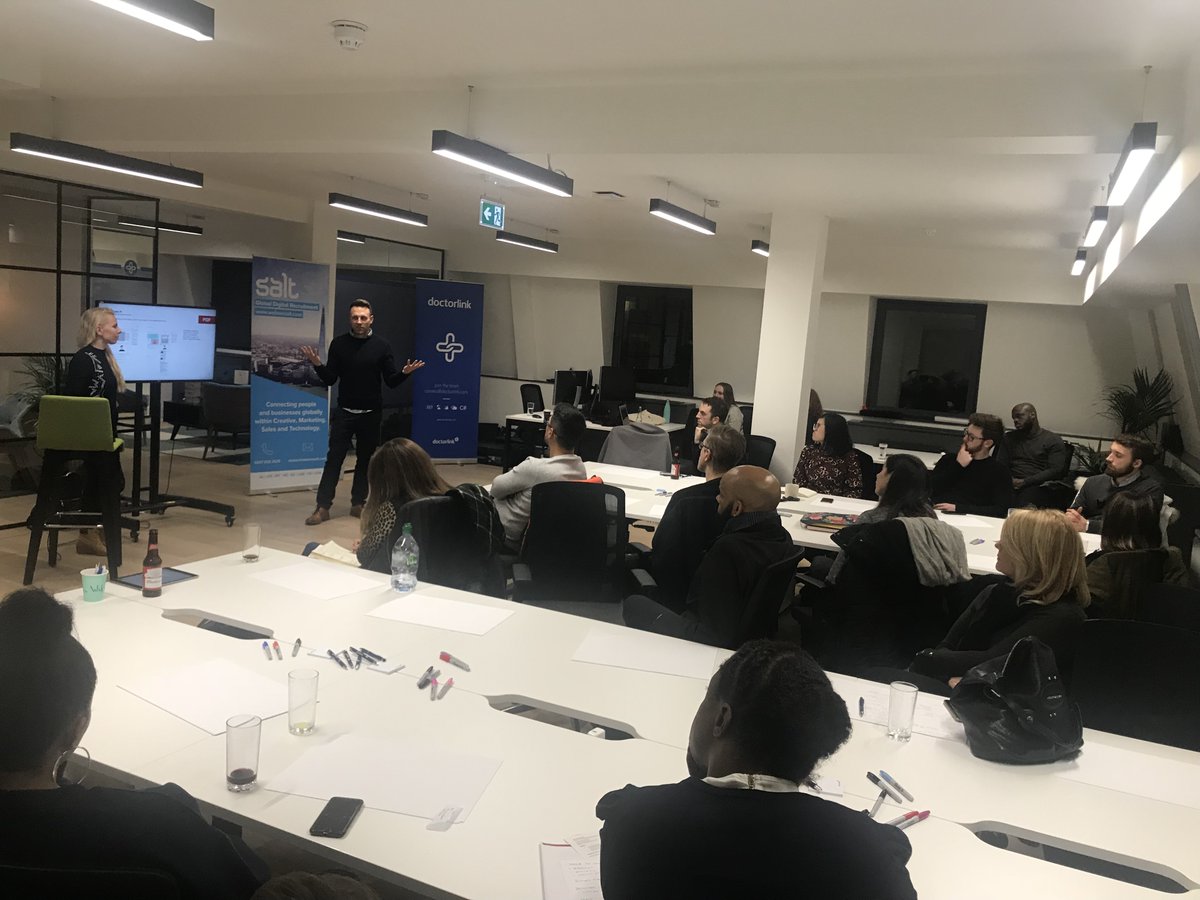
Following on from our ‘How to land your dream UX role – Portfolio Workshop‘ we asked the UX Clicks team to provide some ideas on how to better sell yourself and your experience. No matter what stage in your career you are currently sitting in.
Are you looking for a new role? Have you recently applied for a number of roles but not heard anything back? If you’re not getting any responses from your applications it could be the sign that you are challenged with a couple of things.
Perhaps it’s a lack of commercial experience, maybe you don’t have enough content, or perhaps you’re finding it tough to sell yourself, maybe its a combination of all three of these things.
An online portfolio can be the perfect way to sell yourself and your experience to future prospects. Whether you’re just starting to design your UX portfolio or looking to improve an existing one. We have pulled together four key questions to ask yourself when working on your UX portfolio.
- How do I get started?
- Who is my user?
- Who am I?
- Do I have enough projects?
How do I get started?
Get inspired! This is the best way we’ve found to get excited about what you’re about to do. It also a great way to find out what’s happening in the market place right now. Which will help to keep you and your work on point for any new exciting opportunities on the horizon.
- Investigate Agencies:
There are so many incredible digital agencies out there right now. Most will have a variety of clients, work across multiple sectors, and the good ones will have a strategy in place to keep their own websites updated with their latest case studies.
- Consider Companies:
Another place we’ll often go when looking for inspiration will be companies that have a focus on design. There’s no better example of this than Apple. They have demonstrated time and again the value of truly great design and its impact on a company’s bottom line.
With world pioneering product design, packaging design, interior design, and world-class customer support. Apple is a true innovator when it comes to design and there is no better place to experience this than on their e-commerce site for breathtakingly great examples of product case studies.
- Don’t forget Branding & Advertising:
You won’t have to go far to find some world class examples of advertising and branding, these guys really know how to target an audience.
Each brand comes with its own voice, ethos and targeted audience. Next time you’re taking a stroll down the street, look at how they use colour, typography, imagery and a combination art direction and clever copy-writing to grab that single moment of your attention.
- Try picking up a few Magazines:
Digital is the most amazing form of media we’ve ever encountered. Part of this is due to the fact it mashes together a ton of predecessor medians which arrived before it. Including hundreds of years plus of print design and publishing.
Take a stroll to your local newsagents and skim through some of the high-end lifestyle magazines. Look at how each magazine uses their unique grids, colour patterns, imagery, texture, typography, and page layout to format an entire magazine. There will be more than enough inspiration here to get your design juices flowing.
- Educate yourself through Books:
Yes, I’m still talking print. Books can be one of the best places to learn, here you can understand what some of the best in the business are currently doing. We’ve learned how to get set up for success, how to tackle challenging situations and how to dig deeper into areas we might have been weak on in the past.
Through books we continue to learn about approaches to product, research, design, development, management, leadership, strategy, everything is helpful when it comes to design. Study, educate and immerse yourself as much as possible within the wealth of knowledge that can be found within books.
You can even investigate the history of design, different art forms and any of the other exciting fields within the creative world. You never know where inspiration will come from and it’s one of the best things about being a creative. Enjoy it. Love your craft, learn as much as possible and always stay passionate about the field.
- Interested in motion? Think Film & Movie Titles:
Another fantastic world for inspiration can be the cinema. Look at how title sequences have been designed. Study combinations of sound, concepts, movement and typographical treatments.
If the cinema seems slightly pricey while you’re on the hunt for your next role, don’t forget the high-quality television production now happening with the birth of Netflix and the like’s of Amazon Prime. TV can be a great place to look when thinking about movement and animations within your product designs.
Who is my user?
Some of the most important questions to ask yourself when designing your UX portfolio is; Who is my user? What are their problems, needs and challenges that they’ll be struggling with? How can I improve the design of my UX portfolio to better serve my end users?
- Recruiters:
For those in the UK and Europe, this might be your primary user persona. If you haven’t met with any recruitment agents yet, make it your most important task of this week. These guys are awesome. They can make great friends. They are able to help you navigate the industry, guiding and advising on the best choices for your career at the stage you currently sit. With a spot of luck, they’ll even help you to negotiate that first role.
As is the case with any role you take on as a user experience designer, whatever you can do to better understand your users, the better the solution you will be able to deliver for them.
Great things to remember when thinking about recruitment agents:
- Include keywords
- Keep it easy to navigate through the structure of your website
- Show your work on your landing screen, so they don’t have to hunt around for example case studies
- Double check your website for broken links, these guys won’t want to share websites with their clients that have broken links, this isn’t going to be good for anyone.
- UX Designers:
Hopefully, by this stage, you will have already met a couple of practising designers. This could be through your experiences on a course, via a study group or perhaps you’ve been to some networking events and managed to get some face time with these experienced individuals.
It’s important to understand what a UX Designer is tasked with when it comes to hiring someone for their team. If you haven’t met with someone in the field then it’s high time you started reaching out. It’s going to give you a much better understanding of what any potential role will entail for you too. They’ll be able to give you hints on what to look for in a company to join and what’s important to watch out for. We all make mistakes, so learning from those that have already made a few can be a great way of getting ahead.
We’re a friendly bunch and it’s never been easier to connect with people online. Of course, we’re a busy bunch but most of us are willing to lend a helping hand and support the next generation of budding designers. There’s more than enough work to go around. So, no more excuses, get out there and make some new friends.
Things to consider for UX designers:
- Share your design thinking, this can absolutely include rough doodles
- Be clear with the process and approach you followed
- Share the business problem you faced
- Talk about project challenges and how you overcame them
- Consider the visual aspect of your portfolio
- Don’t forget to share some insights on yourself
- Hiring Managers:
One less obvious user group could be a hiring manager, they could easily be tasked with this challenge. What makes a hiring manager different I hear you ask? Well, they can be interesting because they might be recruiting for a number of different roles and so may not know that much about user experience design. They may know so little that they don’t even know what the role of a UXer truly is, so this can be someone worth thinking about.
How can you make you’re portfolio ‘UX’ stranger friendly? Here are somethings we like to consider. How could you help someone who doesn’t really understand what it is they are looking for? Could you find someone in this situation to get some first-hand knowledge on their particular situation? This might help you understand how they go about tackling this challenge.
Key things to consider for hiring managers:
- Highlight your best projects
- Use industry keywords
- Be clear with your business challenges
- Think about sharing the relevancy of previous experience
- Consider your education highlights
Who am I?
This might seem like an obvious one to say, but it can be a really important thing to consider. What is it that you want to say when it describing yourself? What is it that makes you unique? What’s different about you? What skills and experience do you bring to the table? What is it that makes you stand out from the crowd?
Describing yourself gives people the opportunity to get to know you. Think about it like this, if you manage to impress someone with your project case studies in your portfolio. Wouldn’t it be likely that someone might also want to get to know more about you? If they can do this online via your website then that could mean, the call into their office comes quicker than anticipated.
Consider this… some of the individuals looking at your portfolio might be the same individuals which you could be spending 7-8 hours a day, 5 days a week with. Who wouldn’t want to understand someone better if they are going to be working with someone that amount of time?
Things to think about here:
- Be clear with the terms you use to describe yourself.
- Think about the role you want to achieve, does your description align with this aspiration?
- Think about what makes you unique from others on the market.
- Include an about page and make good use of it.
- Include social media connections.
Do I have enough projects?
One of the biggest concerns we hear from junior designers working on their online portfolio, is how many projects do I really need? You might be surprised to know that it doesn’t have to be that many. If your case studies are solid, well thought through and you are able to define your problem and describe the tasks you went through in a compelling and concise manner. Then as little as 3-5 can be more than enough.
When it comes down to an interview, rarely will you have the opportunity to go through your entire portfolio. People just don’t have the time. I think personally I only once ever had to go through 3 whole projects. But this is rare as few have time to delve into this level of nitty-gritty.
What usually happens is you are required to jump around projects, pulling out relevant insights which might help your prospects better understand your approach and more importantly help them to understand how you might solve their own business challenges.
Providing 3-5 different case studies can be all the experience demonstration required to get that first telephone interview or even an invite into the office. You might be surprised to hear that this can absolutely include your personal projects, If they’re well presented, thorough, they can be just as valuable as anything you’ve previously done for clients.
Takeaways:
To summarise, working on your portfolio is no easy task. it’s something even the best in the business can find challenging. It’s definitely a challenge you should consider as a sizeable piece of work in itself. It’s going to require some time to do well. But if you learn to enjoy the process and give it the care and attention that it requires, it can become a real career maker. So, it should be something you consider a valuable addition to your arsenal of tricks as a designer.
Following a few of the guidelines below, you can make the whole process much easier to tackle. Here are our top 4 questions we’ll ask ourselves before attacking our own online portfolios.
- Get inspired!
- Think online & offline, and be sure to check out what the best in the business are doing for a sight of the direction you want to be heading.
- Always remember your end users.
- Meet, Speak, Interview and communicate regularly with those you are planning to serve with your portfolio. This is the only true way to know if what you are creating is working.
- Don’t forget to describe yourself!
- Be clear with your users of who you are and most importantly what you are aspiring to become. This will help provide clarity and focus to users understanding of who you are.
- 3-5 Projects can be enough.
- Aspire for best in class with your case study pages and remember personal projects can count if they hit a certain standard of quality and depth.
Looking for a contracting position? Check out our range of positions here.
About UXClicks
UXClicks are a couple of senior product designers living and consulting in London. Brought together with a love and passion for design, they’re now bringing years of industry experience to help coach the much needed, designers of the future. www.uxclicks.com
Check out our UI UX designer jobs in London with Salt, a global technology recruitment agency.


